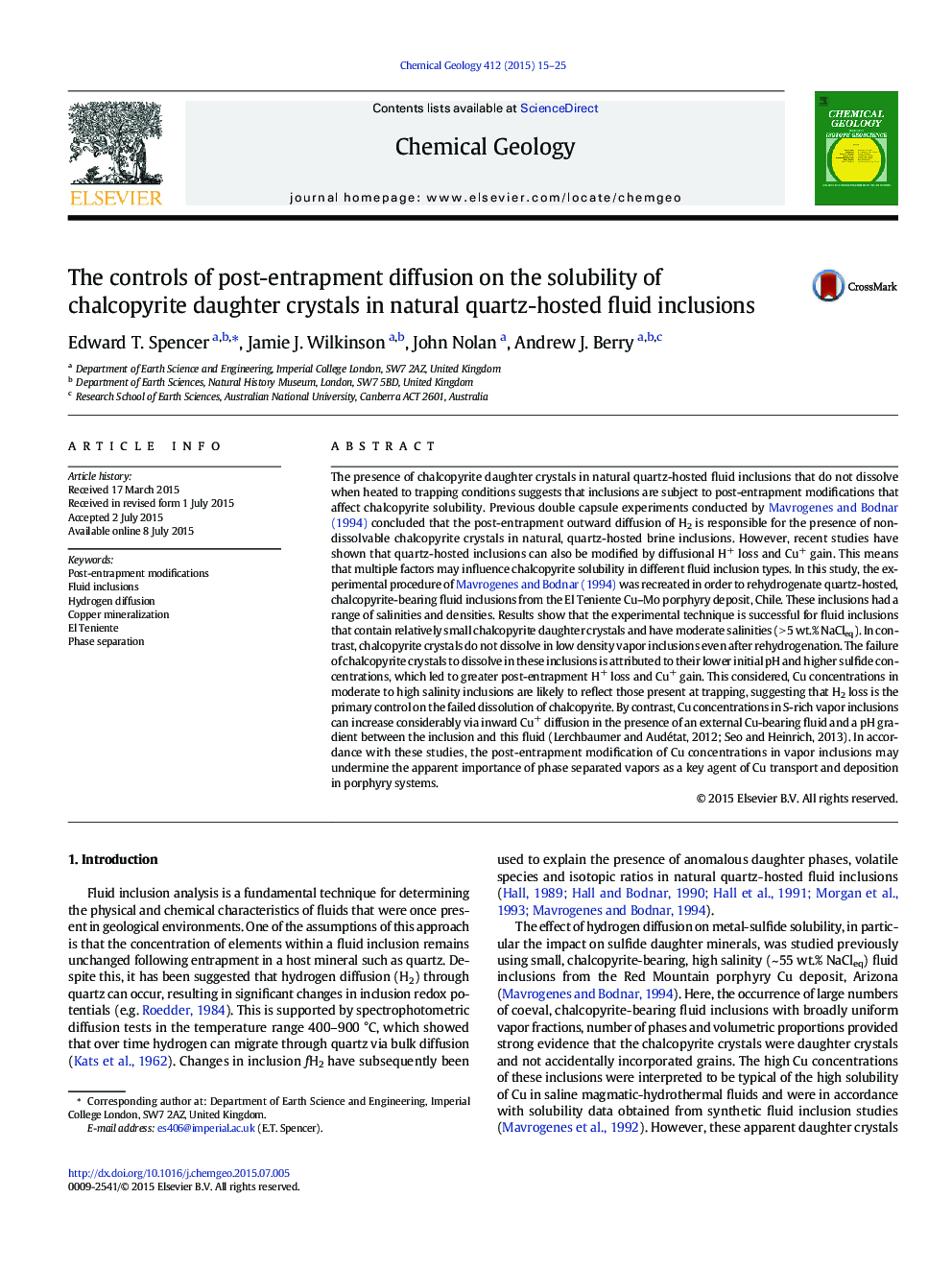| کد مقاله | کد نشریه | سال انتشار | مقاله انگلیسی | نسخه تمام متن |
|---|---|---|---|---|
| 4698418 | 1637562 | 2015 | 11 صفحه PDF | دانلود رایگان |
• Quartz-hosted fluid inclusions are open with respect to H2, H+ and Cu+ diffusion.
• H2 and H+ loss and Cu+ gain reduce cpy solubility in natural fluid inclusions.
• Rehydrogenation of moderate salinity inclusions enables successful cpy dissolution.
• Cpy crystals in S-rich vapor inclusions fail to dissolve due to greater Cu+ gain.
• The role of phase-separated vapors in porphyry Cu-transport is undermined.
The presence of chalcopyrite daughter crystals in natural quartz-hosted fluid inclusions that do not dissolve when heated to trapping conditions suggests that inclusions are subject to post-entrapment modifications that affect chalcopyrite solubility. Previous double capsule experiments conducted by Mavrogenes and Bodnar (1994) concluded that the post-entrapment outward diffusion of H2 is responsible for the presence of non-dissolvable chalcopyrite crystals in natural, quartz-hosted brine inclusions. However, recent studies have shown that quartz-hosted inclusions can also be modified by diffusional H+ loss and Cu+ gain. This means that multiple factors may influence chalcopyrite solubility in different fluid inclusion types. In this study, the experimental procedure of Mavrogenes and Bodnar (1994) was recreated in order to rehydrogenate quartz-hosted, chalcopyrite-bearing fluid inclusions from the El Teniente Cu–Mo porphyry deposit, Chile. These inclusions had a range of salinities and densities. Results show that the experimental technique is successful for fluid inclusions that contain relatively small chalcopyrite daughter crystals and have moderate salinities (> 5 wt.% NaCleq). In contrast, chalcopyrite crystals do not dissolve in low density vapor inclusions even after rehydrogenation. The failure of chalcopyrite crystals to dissolve in these inclusions is attributed to their lower initial pH and higher sulfide concentrations, which led to greater post-entrapment H+ loss and Cu+ gain. This considered, Cu concentrations in moderate to high salinity inclusions are likely to reflect those present at trapping, suggesting that H2 loss is the primary control on the failed dissolution of chalcopyrite. By contrast, Cu concentrations in S-rich vapor inclusions can increase considerably via inward Cu+ diffusion in the presence of an external Cu-bearing fluid and a pH gradient between the inclusion and this fluid (Lerchbaumer and Audétat, 2012; Seo and Heinrich, 2013). In accordance with these studies, the post-entrapment modification of Cu concentrations in vapor inclusions may undermine the apparent importance of phase separated vapors as a key agent of Cu transport and deposition in porphyry systems.
Journal: Chemical Geology - Volume 412, 27 September 2015, Pages 15–25
